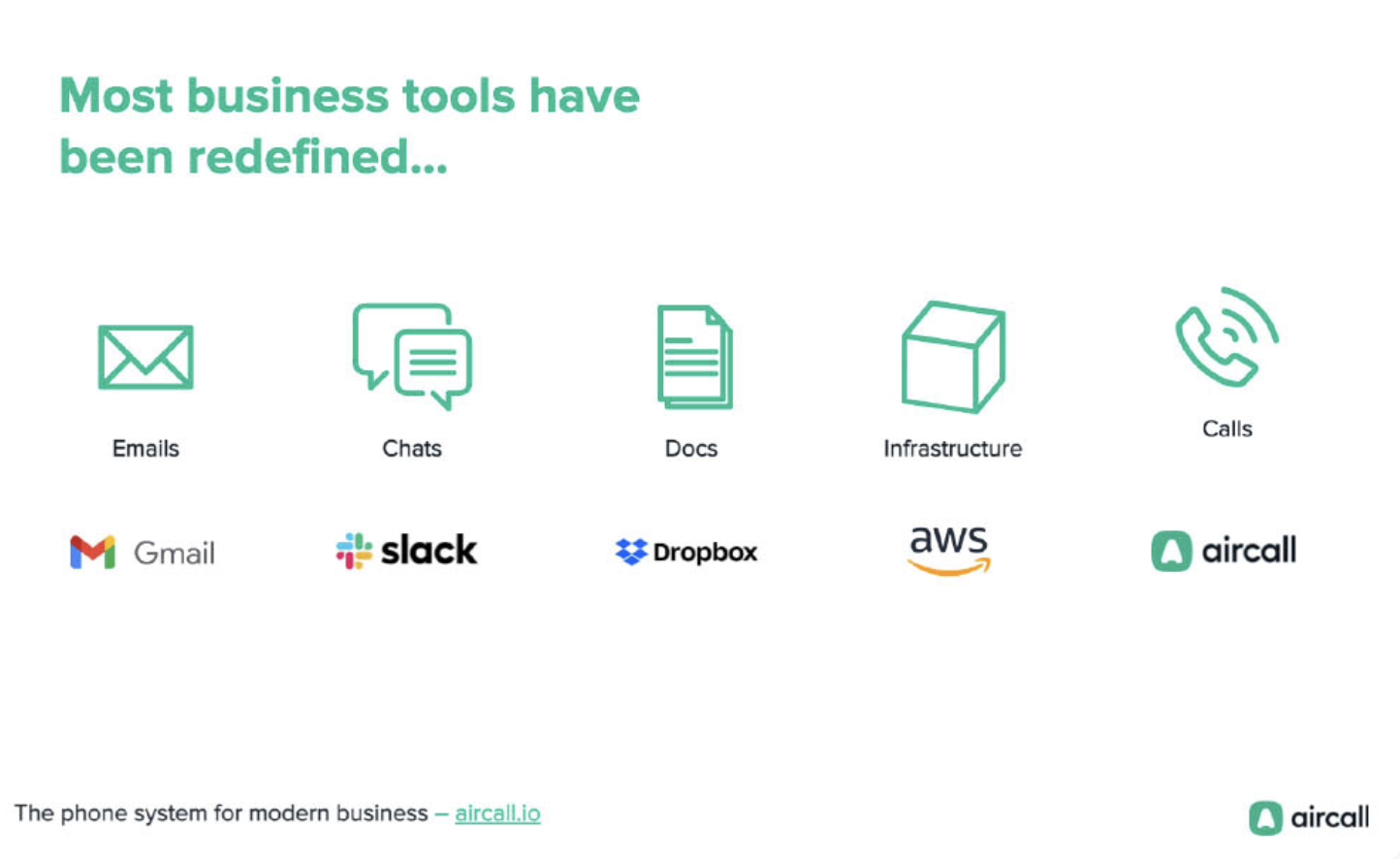You’ve founded a new startup, and it's time to secure some funding.
You know that a pitch deck is a necessary tool for communicating your startup’s value to investors, but you’ve also heard that most founders’ pitch decks are notoriously bad.
What can you do to stand out among the hundreds of startup owners pitching to investors each month? How can you be one of the few with a great pitch deck?
A strong pitch deck shouldn't be complicated, flooded with text, or difficult to understand. It should convey relevant points to your prospect in a highly visual, conversational way.
Let’s explore expert tips demonstrating how to create a compelling pitch deck using modern tools, with pro advice on integrating video as an innovative medium.
Using video to create an engaging, standout pitch deck
Most founder pitch decks are a series of unengaging, static slides.
Make yours stand out among the stack on your investor’s desk by using a solution like Loom to create a video pitch.
Take HR and IT platform Rippling, which, instead of simply sending over a PDF slide deck, used Loom to walk investors through its fundraising materials and ended up raising $250M.
Use these remote pitch desk best practices to follow in Rippling’s footsteps.
Take some time to set up the visual aspects of the shot, such as lighting, composition, and your wardrobe.
Move your camera bubble around during the video to get it out of the way of important details while adding a little more dynamism to the presentation itself.
Take advantage of non-verbal cues like hand gestures and facial expressions.
Include a short compilation of customers sharing their experience with the pain points you’ve identified.
Bring life to static graphs with a short animation.
Include short “expert insight” clips from non-founding members of your team, whose specialized expertise can add weight and authority to your pitch.
Pepper your pitch with short product demos to show investors how your thing works.
Why an effective pitch deck is still useful in 2024 and beyond
You might have heard the saying, “The deck is dead,” floating around founder circles. While it's true that investors are spending far less time poring over pitch deck presentations today, that doesn’t mean you should give up on pitch decks altogether. You should hone in on the things that really matter.
According to a TechCrunch analysis, this means spending less time on business model and company purpose slides, and more time on the competitive analysis and financial operation slides.
An effective pitch deck allows you to speak confidently and naturally without reading directly from the slides. It also serves as prep material, which you can provide to investors ahead of meetings, or leave as a takeaway for them to mull over before making the final decision.
Since most pitch decks are tedious or underwhelming, a clear, compelling, successful pitch deck sets you apart from other potential investment opportunities.
What separates the good pitch decks from the bad?
We know many investors are underwhelmed with the quality of pitch decks their founders present. What actually goes into creating a good one?
Tip 1: Clarity and brevity
Many pitch decks are far too long.
Founders are eager to pack in as much information as possible to show investors that they know their stuff, but end up boring them to death.
The Dwolla pitch deck, for example, is crowded and difficult to absorb.

DoorDash’s pitch deck presentation is clearer, more concise, and easier to interpret.

Funding and acquisition advisor Alejandro Cremades recommends a pitch deck length between 10 and 20 slides and advises sticking to the lower end of that range where possible.
This shouldn’t be an exercise in simply culling the final few slides.
Instead, you should:
Ensure each slide focuses on one point (team, market analysis, traction, financials, etc.).
Use your pitch deck to support a compelling verbal narrative.
Do your research on what the specific inventor is most interested in, and put more time into that aspect of your presentation.
Seek feedback from other founders who have already gone through the process.
Tip 2: Powerful storytelling
A great pitch deck presents more than a series of figures and facts about the market, your product, and your team. It presents a clear, structured, captivating narrative.
Your pitch deck should tell a compelling and motivating story that hooks investors and brings them along for the ride.
One effective storytelling method is focusing on an individual use case, telling the story of a single customer, real or fictitious, and walking the investors through:
The problem they were facing
The reason why current solutions don’t solve their challenge
How they come across your product
How your product solves their problem and adds value
Putting this narrative in the context of a single user’s experience helps investors empathize and envision themselves in the same situation.
It's why charities like World Vision and ChildFund International highlight a single child’s story when raising funds—we empathize with a single human far more easily than a larger, abstract group.
Tip 3: Data visualization
Investors might be finance experts, but that doesn't make a slide full of figures and formulas any easier to digest.
When communicating numerical information, such as exploring quantitative analysis of the market opportunity or diving into financial projections, leverage data visualization techniques like charts and graphs as much as possible.
Here’s how Loom accomplished this in its first pitch deck.

As another example, instead of simply listing out where your target audience lives, you could use a color-coded map to illustrate the same idea.
Tip 4: The art of the call-to-action
Successful startup pitch decks don’t just present a business idea and leave it at that.
They communicate to potential investors what they’re looking for out of the investor relationship and provide a clear call-to-action (CTA).
Your CTA also depends on the context in which you’re using a presentation slide deck.
If you’re sending the deck via email and you want to book a meeting, then your CTA should include your contact details and an offer to meet.
If you plan to use your investor pitch deck in person, then the CTA might segue from a conversation about what kind of funding you’re looking to raise into a request for a funding offer.
Tip 5: Addressing pain points and solutions
The best pitch decks articulate the common challenges your audiences face and how you solve them.

To really impress, try to integrate these ideas throughout the pitch presentation.
Here’s how you might illustrate pain points and solutions across various slides in your startup pitch deck:
Traction slide: How are you already helping existing customers solve pain points?
Team slide: What experience do members of your own startup have facing these challenges themselves?
Competition slide: How are your competitors solving, or not solving, those pain points?
Business model slide: How do your model and go-to-market strategy make it easier for potential customers to understand your solution to their challenge?
Incorporating this consistency throughout your deck demonstrates a cohesive product strategy and a well-thought-out product.
Tip 6: Expert insight
The primary goal of a presentation slide deck is to raise money from investors.
For investors to feel confident providing you with funding, they need to know that you’ve got a good business idea and that you’re the right person to lead that business to success.
Your team slide taps into this expertise, but you should aim to include a bit of unique expert insight across all slides, even in a simple pitch deck.
Say you’re a sales tech startup.
When speaking about the target market, one co-founder might discuss their experience in a previous role working as a sales rep, sharing unique insights into the challenges they faced and how the current competitive landscape doesn’t solve them adequately.
Tip 7: Free of industry jargon
The best pitch deck examples steer clear of complex industry jargon that investors won’t understand.
You can use all the normal startup and funding-related terms you like. Your investors will understand those.
But when you’re talking specifically about your product, industry, and potential clients, it’s best to put things in plain English as much as possible.
Presentations stacked with jargon and corporate buzzwords often indicate that the presenter is attempting to cover up a lack of deeper knowledge or otherwise attempting to inflate the seriousness of the situation.
Aircall’s startup pitch deck is a great example of explaining the key points in simple terms.

Note how the presentation is free of technical terms regarding software infrastructure or corporate jargon about workplace communication.
Just plain English paired with simple imagery to aid visual communication.
Preparing for Q&A: Anticipating investor questions
Investors spend billions of dollars a year on up-and-coming companies. They know they aren’t going to win with every bet, it’s a numbers game, but they do want to hedge their bets and reduce risk where possible.
So, it’s only natural that once you’ve presented your business plan, they’ll have one or two questions for you.
Here are a few of the common ones you should expect, and therefore prepare answers for:
What do you anticipate market growth to look like across the next five years?
Are you using current user engagement data to inform the product roadmap?
Which key metrics will demonstrate success for you?
What’s the biggest competitive advantage you have in this vertical?
How will you know when you’ve succeeded here?
Are you willing to move?
Why are you doing this in the first place?
What are the biggest risks associated with this business, market, and product?
What feedback have you received so far?
Make your pitch stand out with Loom
The pitch deck remains an essential tool in your arsenal when hunting down additional funding for your startup.
Many founders’ pitch decks are boring and ineffective, but this ultimately creates an opportunity and a void for you to fill.
You can easily stand out by keeping your pitch deck succinct, focusing on critical pain points and solutions, and using video and other visualization methods to present data and tell a compelling story.
Loom’s screen recording and video editing solution is the perfect partner for spicing up your pitch deck with engaging video content that wows investors.

